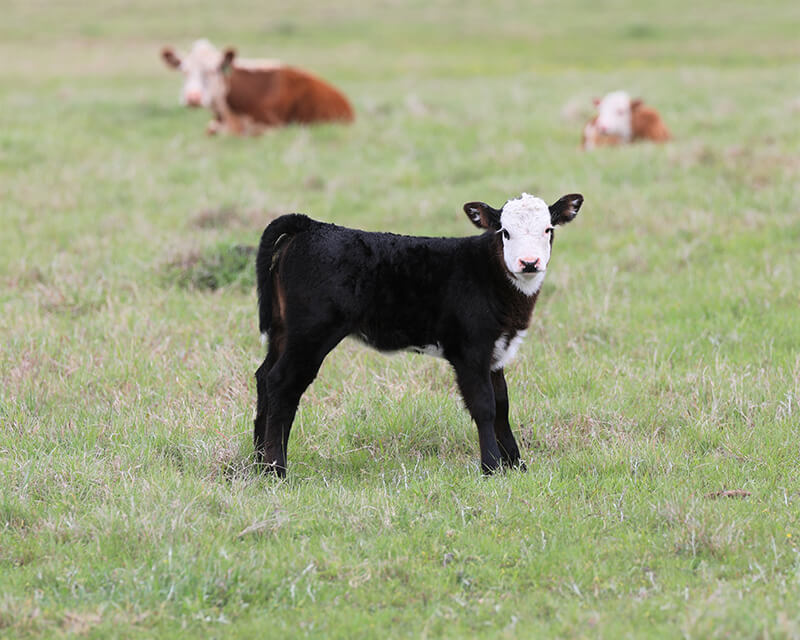The study of genetics and heredity are incredibly important to agriculturalists. Heredity is the passing of physical or mental characteristics genetically from one generation to another. For centuries, farmers and ranchers have selected plant varieties and livestock for specific genetically determined characteristics called traits. Livestock producers select for animals with increased milk production, ample muscle mass, or structural correctness, among other things. Selecting for these traits allows farmers to produce a higher quality and more abundant food supply.
How Traits Are Inherited
Most plants and animals have two of every kind of gene, a unit of heredity transferred from a parent to the offspring. One comes from their mother, and one comes from their father. Only one gene from each parent is passed to each offspring for a particular trait. Linked genes are inherited together or do not assort independently. There are different forms of a gene that are referred to as alleles. Alleles are forms of the same gene with small differences in their DNA sequence. These small differences contribute to each organism's unique physical features and are called phenotypes. A plant or animal's genotype refers to the genetic makeup inherited by the offspring's parent.
Alleles can be either dominant or recessive. Dominant alleles overpower recessive alleles and are always expressed in offspring. Recessive alleles are only expressed if a recessive allele is inherited from both parents, because they are overpowered by even one dominant allele. For example, the allele in cattle that causes horns to grow is recessive. The hornless, or polled, allele is dominant, so more cattle are polled than horned. Dominant alleles are denoted by an uppercase letter, and recessive alleles are denoted by a lower case letter. When the combination of both dominant and recessive genes are present (one parent contributed a dominant gene and one contributed a recessive gene), the condition is called heterozygous. When both genes are either dominant or recessive the condition is called homozygous. Heterozygous would look like "Aa," and the homozygous condition would be expressed as "aa" representing the recessive trait or "AA" representing the dominant trait.
Applying Genetics in Beef Production
Understanding genetics is crucial for farmers. Beef producers try to select and perpetuate characteristics in their cattle such as good marbling (intramuscular fat that contributes tenderness, juiciness and flavor), abundant muscle mass, and structural correctness. With an understanding of the science of genetic inheritance, beef producers can also select for other phenotypic characteristic such as the natural presence or absence of horns. Cattle who naturally do not have horns are called polled cattle. The polled gene (P) is dominant to the horned gene (p). Through selective breeding, cattle ranchers can select breeding stock that will produce calves without horns to eliminate the need to dehorn cattle for safety and management purposes.
Beef Cattle Breeds
There are numerous breeds of beef cattle in the United States and throughout the world. Each breed has distinguishing characteristics that can be passed to their offspring. Angus cattle are polled (naturally without horns) and either all red or all black in color with black being the dominant color. They are used widely in crossbreeding programs to improve carcass (meat) quality, milking ability, and to eliminate horns using genetics. Hereford cattle are reddish brown with a white face and underbelly. They are larger framed with abundant muscle but can have less marbling than Angus cattle. Herefords can be either polled or horned. Angus and Hereford cattle are often used in crossbreeding programs in hopes of maximizing hybrid vigor. A Black Angus/Hereford cross can be identified by a white face and all black body, usually with no horns. They are typically known as a "Black Baldy." These crossbred calves are normally a product of an Angus cow bred with a Hereford bull or vice versa. Crossbred cattle have been shown to have up to 20% more lifetime productivity over purebreds, which leads to an economic advantage for farmers.
